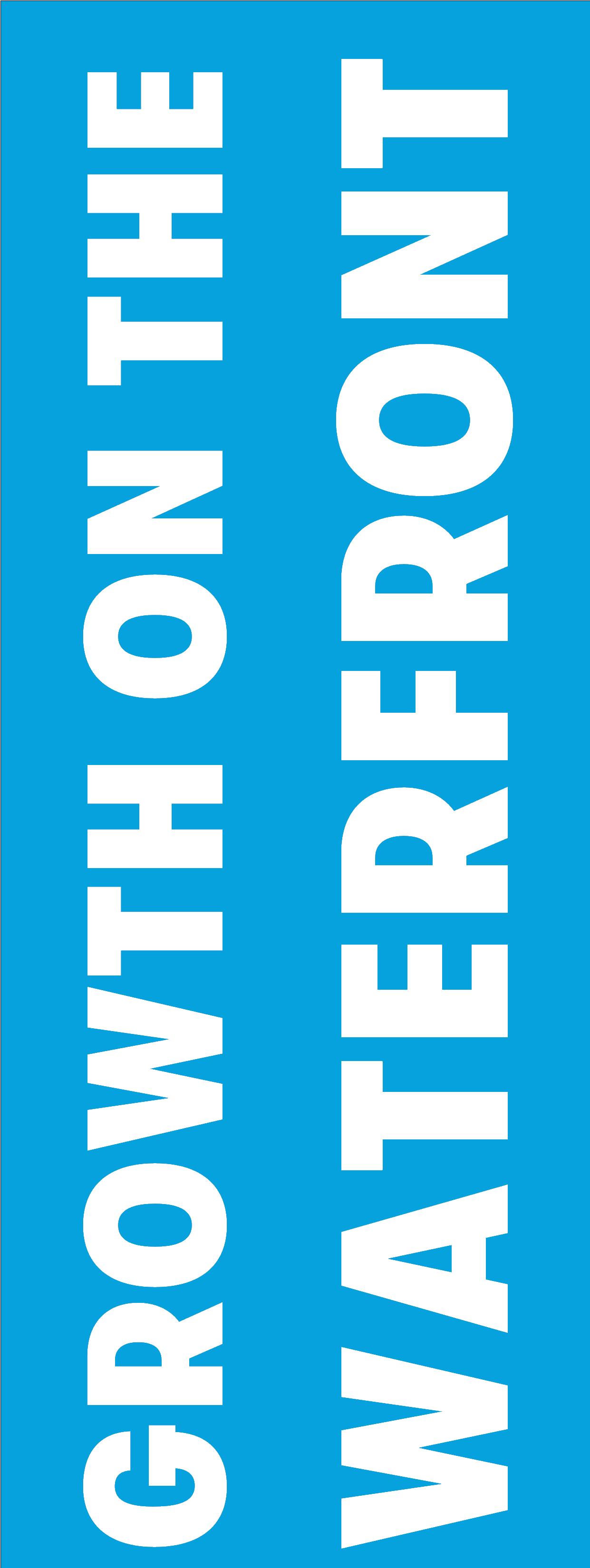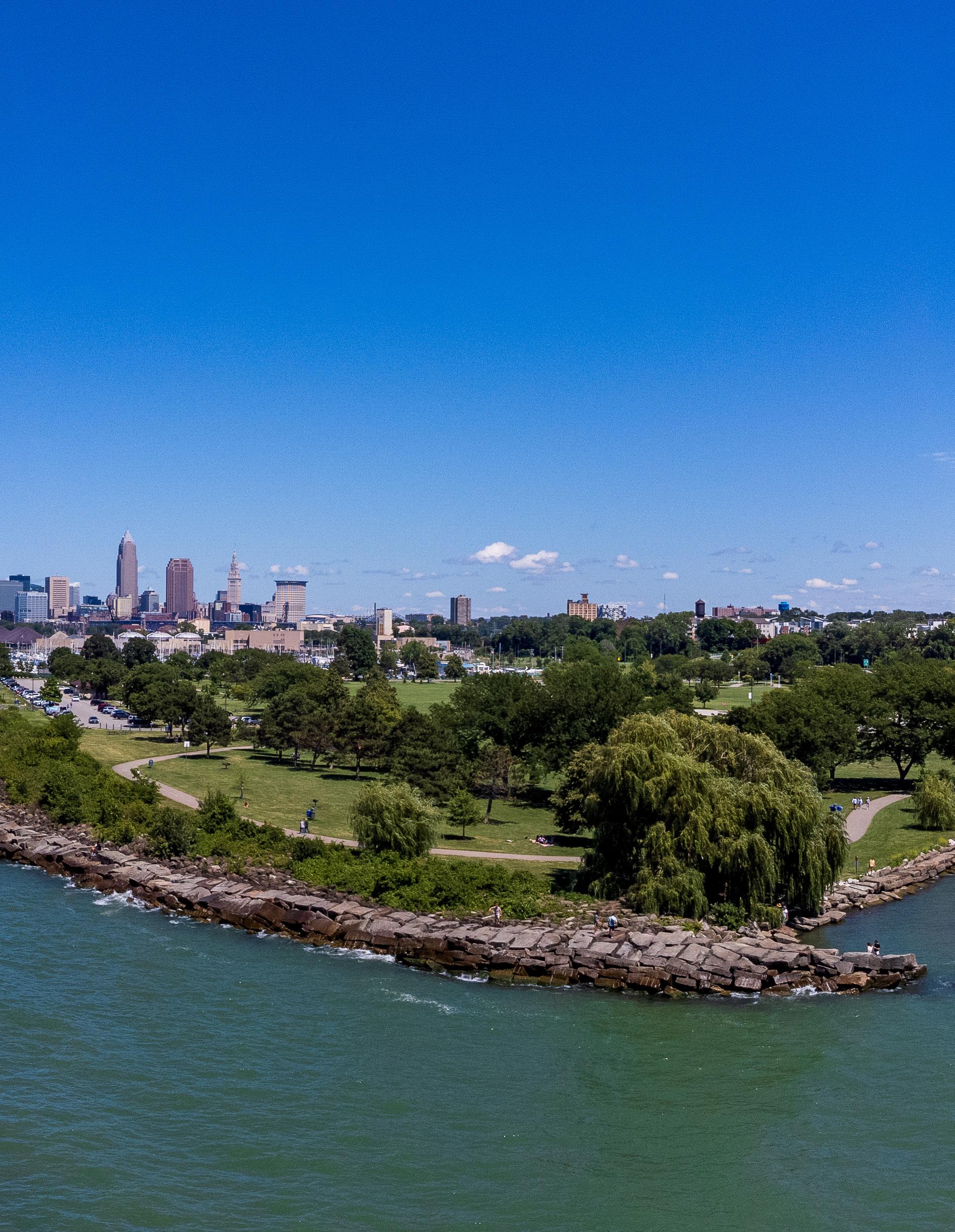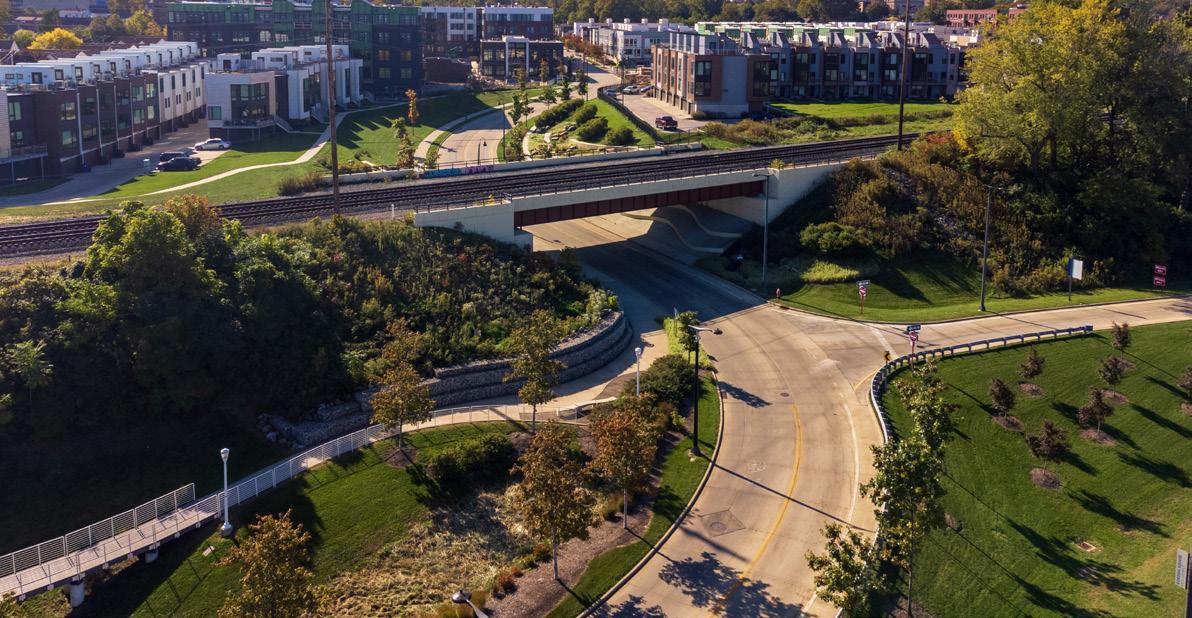Greater Cleveland Partnership


A Case Study






This story is the first in a series looking at development and progress around Cleveland’s lakefront, and the power of public-private partnerships to transform neighborhoods.
Detroit Shoreway is one of the city’s most vibrant and economically and racially diverse areas
The last two decades in the Detroit Shoreway area have been a story of connections: lakefront and city; public and private investment; and past and future.
From the $100 million public Waterfront District Plan that connected the waterfront and city for the first time in more than a century, to the $30 million Gordon Square Arts District investment that created one of Cleveland’s most vibrant art and retail districts, to more than $1.3 billion of private investment in residential units spurred by the public commitment, the neighborhood is thriving. Today, Detroit Shoreway is one of Cleveland’s most vibrant, racially and economically diverse areas, with fewer unoccupied houses and a population that is holding steady.
“It’s all about connections and leverage,” says Matt Zone, former Ward 15 councilman and now Senior Vice President of Western Reserve Land Conservancy.
“Based on the public investment of the $100 million Waterfront District Plan, we had developers who were willing to invest in our community -- the private sector saw the value in investing in a forgotten neighborhood of Cleveland.”
With a combination of local, state and federal funding, the Waterfront District Plan resulted in three connecters between Edgewater and the city: a pedestrian-only passage at West 65th Street in 2003 ($3 million); a pedestrian-only tunnel at West 76th Street in 2012; and most significantly, a new roadway and pedestrian tunnel at West 73rd Street ($34.8 million) in 2015. The West Shoreway was converted to a boulevard, additional streets were created, and railway underpasses were renovated. At the same time, the Gordon Square Arts District capital campaign invested significantly in area.
This, coupled with the national spotlight and private investment from LeBron James’ “Cleveland Hustles” pitch competition in 2016, spurred retail investment around West 65th Street and Detroit Avenue. In 2017, the area became even more appealing with the opening of the $4.5 million Edgewater Beach House by the Cleveland Metroparks, who took over management of the lakefront parks in 2013. Two years later, the 17mile Cleveland Lakefront Bikeway connected the area to downtown and the East Side.
“The Arts District brought alive the area of West 65th Street and Detroit,” says Adam Stalder, Executive Director of the Northwest Neighborhoods CDC.
Connecting to Growth: How public-private partnerships transformed the waterfront and a struggling Cleveland neighborhood
“However, the amount of money that came into commercial development was small compared to the apartment boom that was driven by being close to the lake and connections to the lake. That is where people want to live, and they want to have a walkable community.”
Both Stalder and Zone cite the $100 million Marous Development Group investment in the 14-acre former Eveready site between West 73rd and West 76th, today Battery Park, as the stimulus for private investment.
“Marous took on an old brownfield and built a nearly 300-unit site that leveraged more than $200 million of investments,” said Zone.
Developer Adelbert “Chip” Marous described his first tour of the site, in January of 2001. Where others saw the grim, industrial past, he saw the future.
“We walked up to the fifth floor of the building nearest to the entrance of the Eveready facility. And we looked out over the site and I asked my peer, what do you see when you look out here?’ He saw months of environmental research. I saw the
most amazing real estate development the West Side had ever seen.”
The investment in Battery Park would prove a catalyst to the area, and publicprivate collaborations helped make it happen.
The City of Cleveland and state invested in the infrastructure and roads. Brownfield remediation funds helped Eveready with clean-up costs and lowered the purchase price; the city extended tax abatement; and New Market Tax Credits were used to bring down interest rates for new owners.
Numerous other developments have followed Battery Park, including market-rate, affordable and mixedincome units. The largest is the marketrate 306-unit, $57 million Edison, completed in 2017 on Father Caruso Drive.
“It was a huge industrial site,” Stalder. “NRP acquired it; it was the first large new market rate constriction in the area since Battery Park.
“The Edison is deeply connected to the lakefront,” he adds. “NRP built a multipurpose trail through the site to make connections to the lake, connections down to Edgewater Park.”

Battery Park Vintage
New Construction Single-Family Homes Sylvia Apartments
Harp Apartments
Kennedy Building
The Templin-Bradley Co. Lofts
The Edison at Gordon Square
Breakwater Bluffs

Cyan Park
Ravella Townhomes
Detroit Shoreway Homes
Station 73 at Battery Park
Karam Senior Living
SW Detroit Shoreway Homes
Waverly & Oak
The Slate
“We like this because on our bikes and be tunnel and be at the



New residential construction has driven demographic changes in Detroit Shoreway. Though population has stayed about the same, the number of unoccupied houses has declined and single-family units have risen, as have sale prices for single and multi-family units. (In the 1990s, the median home sale price was only $16,000.) The number of residents making over $100,00 has dramatically increased. The area is also racially diverse: 49 % non-Hispanic white, 24 % Black, 25 % Hispanic and 3% other residents.

Frank D’Onofrio, 76, has lived in the area all but ten years of his life. D’Onofrio lived through the suburban exodus of his friends in the 1970s, and is pleased to see new generations returning and his home value rising.
“Growing up, we always thought, we’ve got the lake, we have retail. People think of the Gold Coast and Lakewood as great neighborhoods, why don’t they think of us that way? We waited for years and years for people to catch on. I never thought I would live to see this. I used to see people circling the blocks, looking for a way through. The accessibility really opened us up.”
Access to the lake was a major factor in the decision
of Dario Petronzio and Kaleigh Cupka to move to the West Side from downtown with the purchase of a single-family home and adjacent Air BnB in 2021.
“We wanted a multi-family set-up. Ohio City was overpriced and difficult to get into. We decided we wanted to be next to the lake. We found Gordon Square and fell in love with it. Waterfront access played a huge role in our decision. I can walk out of my drive and walk to the lake. You feel very connected here.”
Cupka says connections to downtown added to the appeal.
“The bike trail is right there. We ride our bikes down to Whiskey Island to play volleyball at least once a week.”
Ultimately, their decision to invest in Detroit Shoreway was all about location, location, location –and connections.







